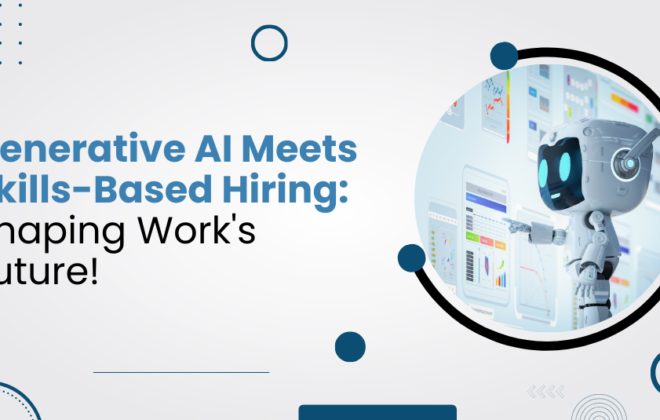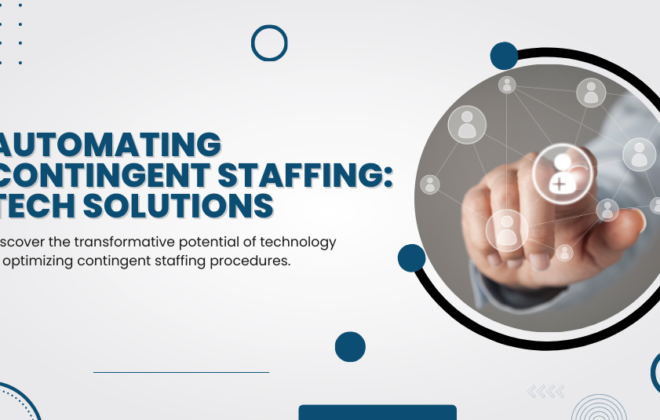Time-to-Hire: All You Need to Know About This Metric
With a myriad of interviews, screening tests, and what not, recruiters tend to increase their recruiting time without even realizing the repercussions. Every step in the hiring process adds up to the overall hiring time. Be it the quality of tools, rounds of interviews, phone assessment, or quality of skill tests.
This is why you must take special care of time-to-hire metrics while gauging your overall recruiting performance. Unlike other HR metrics such as employee engagement and employee satisfaction, this metric gives concrete insights into the hiring process in the form of numbers and stats. To understand how exactly it benefits the overall recruiting process and how one can optimize to gain maximum returns, let’s first understand what this metric entails.
- Defining Time-to-Hire
- How It is Different from Time-to-Fill Metric
- Calculating Average Time-to-Hire
- Tracking and Optimizing Time-to-Hire Metric
Defining Time-to-Hire
Time to hire calculates the time it takes a candidate to accept your job offer from the day they enter into your talent pipeline. In short, it’s the time between the day the candidate applied for the job to the day they got hired.
How It Is Different From Time-to-Fill Metric?
The time-to-hire metric is often interchangeably used with time to fill metric, which is incorrect. A major difference between both the metrics is the starting point.
Time to fill calculates the time of the entire hiring process from job application to job acceptance whereas time to hire starts from the time the hire enters the talent pipeline i.e., the talent comes in contact with the recruiter for the hiring process. In cases of time to fill, the starting point could start from the moment a hiring manager submits a job opening for approval, HR or Finance approves a job opening or a recruiter advertises a job opening.
Calculating Average Time to Hire
You can calculate the average time to hire by adding up the days it took to hire and dividing it by the number of hires. To illustrate, if you hired 4 candidates, in 10, 20, 25, and 30 days then your average time to hire is (10+20+25+30)/4 = 21.25 days. This means, on average it takes you around 21 days to hire a candidate.
![]()
The average time to hire varies as per industry. If you are hiring for a niche, tech field that requires specialized interviews and assessments, then time-to-hire for such roles would be high due to the specific nature of the job. Whereas, hiring for less niche or experienced roles would reduce the time to hire significantly. According to a report, the average time to hire a construction worker was 12.7 days whereas for engineering roles it was as high as 60.
![]()
Tracking and Optimizing Time to Hire Metric
Tracking and optimizing go hand in hand. The more you track, the more you can optimize the process. For this, we bring a list of recommended action items that would help to better track and optimize your time-to-hire metric.
1. Break Down Your Hiring Process
Segregate your hiring process into different stages. This way you can individually measure the time invested on every hiring stage and can utilize these numbers to understand what’s causing your team to spend such a large amount of time on one process than another. Once understood, you can use the resulting analysis to look for better alternatives and tools.
2. Follow a Data-driven Approach
Data provides enhanced process visibility and efficiency. More than ever, it is being used to improve processes and performance. This is why you must never leave this important aspect behind when optimizing your time-to-hire metric. To start with, use the data to find out,
- How long your current processes are taking?
- What is the quality of hire you’re yielding?
- How long it takes to move between two stages?
- How much your time-to-hire varies w.r.t to the average hiring time of your industry?
After gathering answers to these questions, evaluate whether they’re on par with industry standards. If not, get your best minds to work and start reinventing your strategies to meet the industry standards.
For instance, Google used a data-driven approach to cut down their hiring time by about two weeks. The data presented that Google spent more than the required time in interviewing candidates. After analyzing, Google decided to cut down the round of interviews from 10-15 to 4. The number 4 was decided based on the analysis that panels of just four interviewers made the same hiring decision as panels of more than four interviewers.
3. Invest in Applicant Tracking System
A good ATS is a boon for every recruiter. It makes the whole recruiting process way more structured and smoother. From adding candidates to the pipeline to confirming their joining, everything goes smooth when handling the processes on ATS.
Moreover, with added features like interview scheduling, application integration, SMS notifications, and more, you can manage all your processes from one place without losing track. This structured tool vastly simplifies your recruiting process and cuts down the overall hiring time to a minimum.
Read More: Choosing the Right ATS for Your Business
4. Use Assessment Software
Manual assessment of every candidate can eat a large chunk of your recruiting time. According to stats, IQ test adds 2.6 to 4.4 days, whereas personality tests can take 0.9 to 1.3 days on average.
![]()
Using assessment software can cut down this time to nearly half without losing the grip on the quality. A good skill assessment software can further bring this time down by providing intelligent skill tests that can evaluate a candidate for multiple skills at the same time.
Read More: Strategies to Optimize Cost-Per-Hire
Related Posts
Subscribe For Updates
Categories
- Accountant
- AI
- Automation
- Awards and Recognitions
- Blue Collar Staffing
- Burnouts
- Campus Recruiting
- Cloud
- Co-Ops agreements
- Company Culture
- Compliance
- contingent workforce
- Contingent Workforce
- COVID-19
- Cyber Security Staffing
- Data Strategy
- Digital Transformation
- direct sourcing
- Distributed Workforce
- Diversity
- Diversity & Inclusion
- Economy
- Events & Conferences
- fleet industry
- Gig Economy
- Girls in Tech
- Global Talent Research and Staffing
- Government
- Healthcare
- Healthcare Staffing
- Hiring Process
- Hiring Trends
- Home Helathcare
- HR
- HR Practices
- HR Tech
- IT
- Labor Shortages
- Life Science
- Local Governments
- News
- Nursing
- Payroll Staffing
- Public Sectors
- Recruiting
- Remote Work
- Skill Gap
- SMB Hiring
- Snowflake
- Staffing
- Staffing Augmentation
- Staffing Challenges
- Talent ROI
- Tech Staffing
- Technology
- Tips & tricks
- Total Talent Management
- UI/UX Design
- Uncategorized
- Veteran Staffing
- Veterans Hiring
- Veterans Hiring
- Workforce Management
Recent Posts
- Automation in Recruiting: From Chatbots to Predictive Screening
- Gig Economy Expansion: The Impact on Talent Pools and Business Models
- Skills-Based Hiring: Why Credentials Alone Don’t Cut It in 2025
- Procurement 3.0: AI & Intelligent Automation in 2025
- Q3 Is Here: Is Your Contingent Workforce Strategy Falling Behind?
Newsletter
Archive
- September 2025
- August 2025
- June 2025
- April 2025
- March 2025
- December 2024
- November 2024
- October 2024
- September 2024
- August 2024
- July 2024
- June 2024
- May 2024
- April 2024
- March 2024
- February 2024
- January 2024
- December 2023
- November 2023
- October 2023
- September 2023
- August 2023
- July 2023
- June 2023
- May 2023
- April 2023
- March 2023
- February 2023
- December 2022
- November 2022
- October 2022
- September 2022
- August 2022
- July 2022
- June 2022
- November 2021
- October 2021
- September 2021
- August 2021
- July 2021
- June 2021
- May 2021
- April 2021
- March 2021
- February 2021
- January 2021
- December 2020
- November 2020
- October 2020
- September 2020
- August 2020
- July 2020
- June 2020
- May 2020
- April 2020
- March 2020
- February 2020
- January 2020
- December 2019
- November 2019
- October 2019
- September 2019
- August 2019
- July 2019
- June 2019
- May 2019
- January 2019
- December 2018
- November 2018
- October 2018
- September 2018
- August 2018
- July 2018
- June 2018
- May 2018
- April 2018
- March 2018
- February 2018
- January 2018
- December 2017
- November 2017
- October 2017
- September 2017
- August 2017
- July 2017
- June 2017
- May 2017
- November 2016
- October 2016




